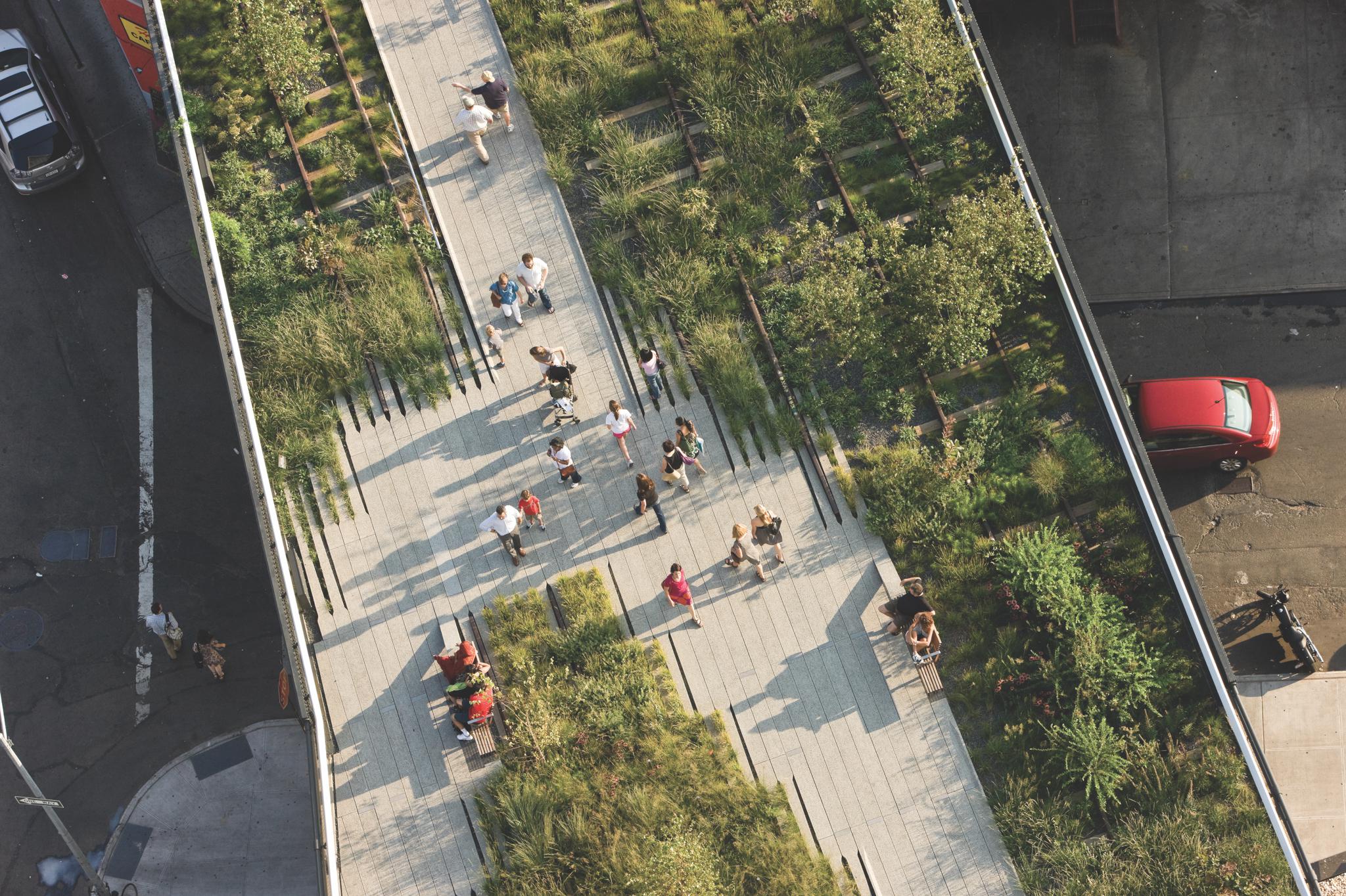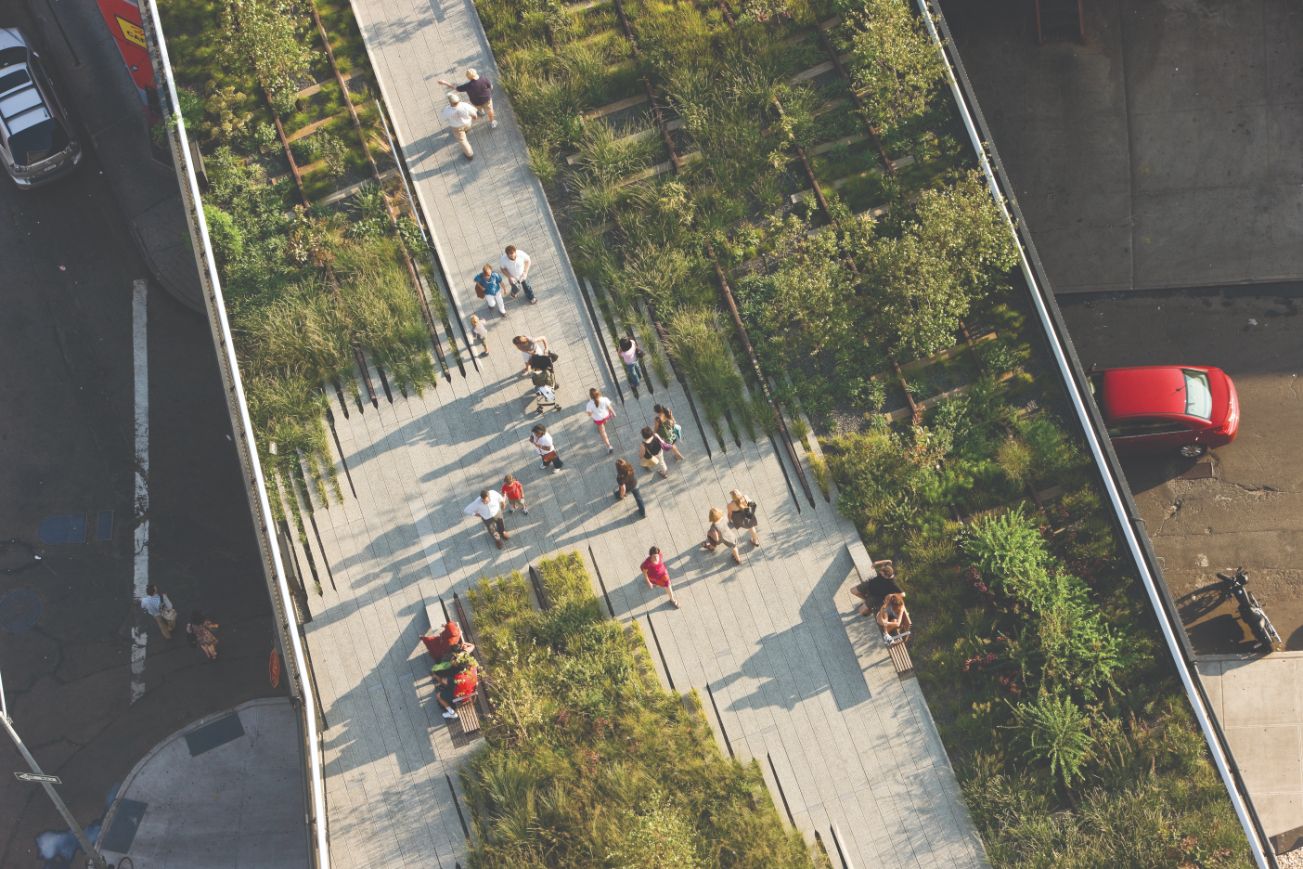United States Hotels
The Big Green Apple: Sustainability in NYC
hotels

Packed with sights, style and a whole lot of personality, New York City, as Kate Symons discovers, is also leading the way on sustainability

Packed with sights, style and a whole lot of personality, New York City is undoubtedly one of the world’s most irresistible destinations. As Kate Symons discovers, the city that never sleeps is also leading the way on sustainability
It had been three years in the making. Three years since I first tasted ‘7 Minutes in Heaven’, the smoothie of my dreams from The Butcher’s Daughter in New York City’s Nolita neighbourhood, and three years waiting to taste it again.
It was as delicious as I had remembered, but as I strolled those famous streets, admiring the cast-iron architecture characteristic of Downtown, I soon realised something was amiss. My drink was undrinkable. Literally. It refused to travel up the straw. The lovely paper straw. The lovely, environmentally friendly paper straw. The lovely, environmentally friendly paper straw that, as it turned out, had been ruthlessly sliced open by the razor-sharp prongs of the cup’s lid, rendering it useless.
Imperfect as they may be, the paper straw, it seems, is the eco-effort du jour in New York City, at least for now. There wasn’t a plastic cousin in sight during my recent visit, an effort worth noting and applauding.
Of course, the city’s sustainability efforts go far deeper than the humble straw. In fact, the Big Apple is the most sustainable city in the United States and 14th globally, according to the 2018 Sustainable Cities Index, which ranks cities on the pillars of people, planet and profit. When graded solely on the planet categories, NYC drops to 20th globally, but still out-ranks all USA contenders.
This might come as a surprise. Thanks to pop culture, even those who have never visited NYC understand it is a city densely packed with people, vehicles and buildings. The convergence of people and resources is one of the unique challenges in urban environments, yet a highly visible commitment, from government level right through to straw-rejecting citizens, is keeping New York City at the forefront of sustainability.
For environmentally conscious travellers, there are countless ways to minimise on-the-ground-impact – using the extensive public transport system or, better still, walking or cycling; visiting green landmarks such as the High Line, the elevated rail line-turned-linear park hovering over the city’s West Side; and eating at farm-to-table restaurants, to name a few. Choosing sustainability-minded accommodation to name another. It’s not always simple. Greenwashing (when organisations falsify their environmentally friendly efforts) can be hard to spot, but there are credentials that will help identify authenticity. The NYC Carbon Challenge, for example, involves 19 hotels that have committed to reducing building-generated emissions by 30 per cent by 2025. Among them, the city’s two 1 Hotels: Central Park and Brooklyn Bridge.
In the heart of Midtown, 1 Hotel Central Park is an ivy-covered beauty with eco-credentials to match. It was designed using reclaimed and locally sourced materials, which is evident throughout the property, while low-energy lightbulbs, a triple-filtered purification water system, and fresh farm-to-table dining offerings are among the many initiatives that expand on the hotel’s sustainability ethos.
On the other side of East River, 1 Hotel Brooklyn Bridge is equally mission-driven. The aesthetic is similar – raw materials, light-filled spaces, abundant greenery – although the journey to get there was quite different. Arash Azarabarzin, President of SH Hotels & Resorts, which operates 1 Hotels, says a ground-up construction, such as the Brooklyn project, presents a different set of challenges and opportunities.
“The urban density does come with its own set of challenges, including ageing infrastructure, conflicting priorities, and increased environmental stressors,” Azarabarzin explains. “When we build a 1 Hotel in an urban context, we strive to understand the boundary where we can provide a positive impact to the environment given the environment’s constraints.
“For new builds, we are able to truly innovate around building systems and, in particular, with the opportunities around the mechanical systems because there is less of a concern around space constraints. For existing buildings and adaptive reuse projects [such as 1 Hotel Central Park], our opportunities lie in reclaiming building materials and thereby reducing the overall embodied energy of the project.”
New-build innovation was rarely more evident than during construction of 1 Hotel Brooklyn Bridge, which coincided with Superstorm Sandy in 2012. Due to the destruction caused in the area, waterfront zoning changed, requiring 1 Hotels to raise the building 36 inches, or a touch over 91 centimetres. New regulations also restricted increasing the building’s overall height. An extensive redesign was required and the result is a building that not only avoids storm surge and flooding, it also captures rain water to reuse on site and in Brooklyn Bridge Park.
A LEED-certified project, the waterfront hotel operates entirely on wind power, boasts energy-efficient heating and cooling systems, uses filtered water in all taps, sinks, and showers, and relies on green cleaning solvents. Refillable bathroom amenities, wooden room keys, cardboard coat hangers and the like are par for the course, and even the handwritten welcome note is penned on bio-degradable, seed-infused paper. Plant it, water it, and watch it grow. Blooming marvellous.
Azarabarzin says providing guests with mindful moments throughout their stay instigates engagement and further strengthens the hotel’s sustainability initiatives.
Already a world-leader, New York City stepped up its sustainability game in April by updating targets set by the city’s OneNYC strategy, originally announced in 2015. Carbon neutrality by 2050 and zero waste to landfill by 2030 are two key objectives; the city also became the first in the world to require all existing buildings of 25,000 square feet (about 2300 square metres) or more to lower their energy usage and emissions. This regulation has enormous potential. Almost 70 per cent of emissions in New York City come from its buildings and, citywide, about 50,000 buildings are in excess of 25,000 square feet.
Coming in at 386,000 square feet, The Dominick is already on the case. Last year, the SoHo hotel became the second property in NYC to receive the Green Seal Bronze certification, an acknowledgement of its commitment to sustainable, efficient and recyclable services.
The Dominick General Manager, Edward Shapard, says a genuine commitment to sustainability is not only good for the planet, it is increasingly important to guests.
“Today’s travellers are looking to stay at hotels that help them reduce their environmental impact and provide a local experience,” he says. “As this consumer intention continues to grow, we are continuing to amplify our efforts to seamlessly combine luxury with sustainability.”
As part of the hotel’s commitment all major heating, ventilating and air-conditioning units follow schedules, which allows for decreased energy consumption; 90 per cent of lighting has been switched from halogen or fluorescent to LED, which has decreased heat emissions from 80 per cent to about 10 per cent; and a food-waste management system funnels refuse into Manhattan’s sewage, reducing landfill waste.
The food waste system is run by ORCA, touted as the leading technology in environmentally friendly waste management. It works by using air, along with water and microbiology to turn food waste into an environmentally safe liquid.
Shapard says keeping abreast of new and emerging technologies is critical to maintaining the hotel’s lofty green standards.
“As technology improves we look to stay on the cutting edge, constantly looking to evolve our initiatives and programs in lockstep with the trends,” he says. “For example, we are working to complete the conversion of all lighting to LED, applying this to the entire building to make The Dominick as energy efficient as possible.”
To be sure, cutting-edge technology is a long way from paper straws, but actions big and small are required to better protect our environment. And while the so-called concrete jungle is already an extraordinary travel destination, the lure of a green jungle is surely even stronger.
Latest Articles
Don't miss the latest from Luxury Travel
